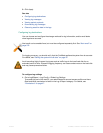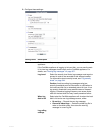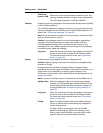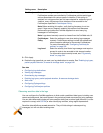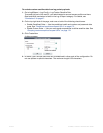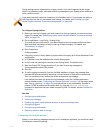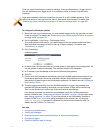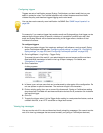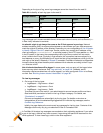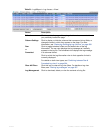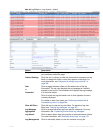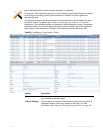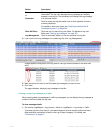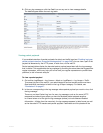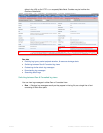
Fortinet 557 FortiWeb 5.0 Patch 6 Administration Guide
Configuring triggers
Triggers are sets of notification servers (Syslog, FortiAnalyzer, and alert email) that you can
select in protection rules. The FortiWeb appliance will contact those servers when traffic
violates the policy and therefore triggers logging and/or alert email.
For example, if you create a trigger that contains email and Syslog settings, that trigger can be
selected
as the trigger action for specific violations of a protection profile’s sub-rules. Alert
email and Syslog records will be created according to the trigger when a violation of that
individual rule occurs.
To configure triggers
1. Before
you create a trigger, first create any settings it will reference, such as email, Syslog
and/or FortiAnalyzer settings (see “Configuring email settings” on page 576, “Configuring
Syslog settings” on page 554, and “Configuring FortiAnalyzer policies” on page 555).
2. Go to Log&Report > Log Policy > Trigger Policy.
To access this part of the web UI, your administrator’s account access profile must have
Read and Write permission to items in the Log & Report category. For details, see
“Permissions” on page 47.
3. Click Create New.
A dialog appears.
4. In Name, type a unique name that can be referenced by other parts of the configuration. Do
not use spaces or special characters. The maximum length is 35 characters.
5. Pick an existing policy from one or more of the three email, Syslog or FortiAnalyzer setting
drop-down lists. FortiWeb will use these notification devices for all protection rule violations
that use this trigger.
6. Click OK.
7. To apply the trigger, select it in the Trigger Action setting in a web protection feature, such as
a hidden field rule, or an HTTP constraint on illegal host names.
Viewing log messages
You can use the web UI to view and download locally stored log messages. (You cannot use the
web UI to view log messages that are stored remotely on Syslog or FortiAnalyzer devices.)
You can also receive security event notification via SNMP. See “SNMP traps & queries” on
page 580.



